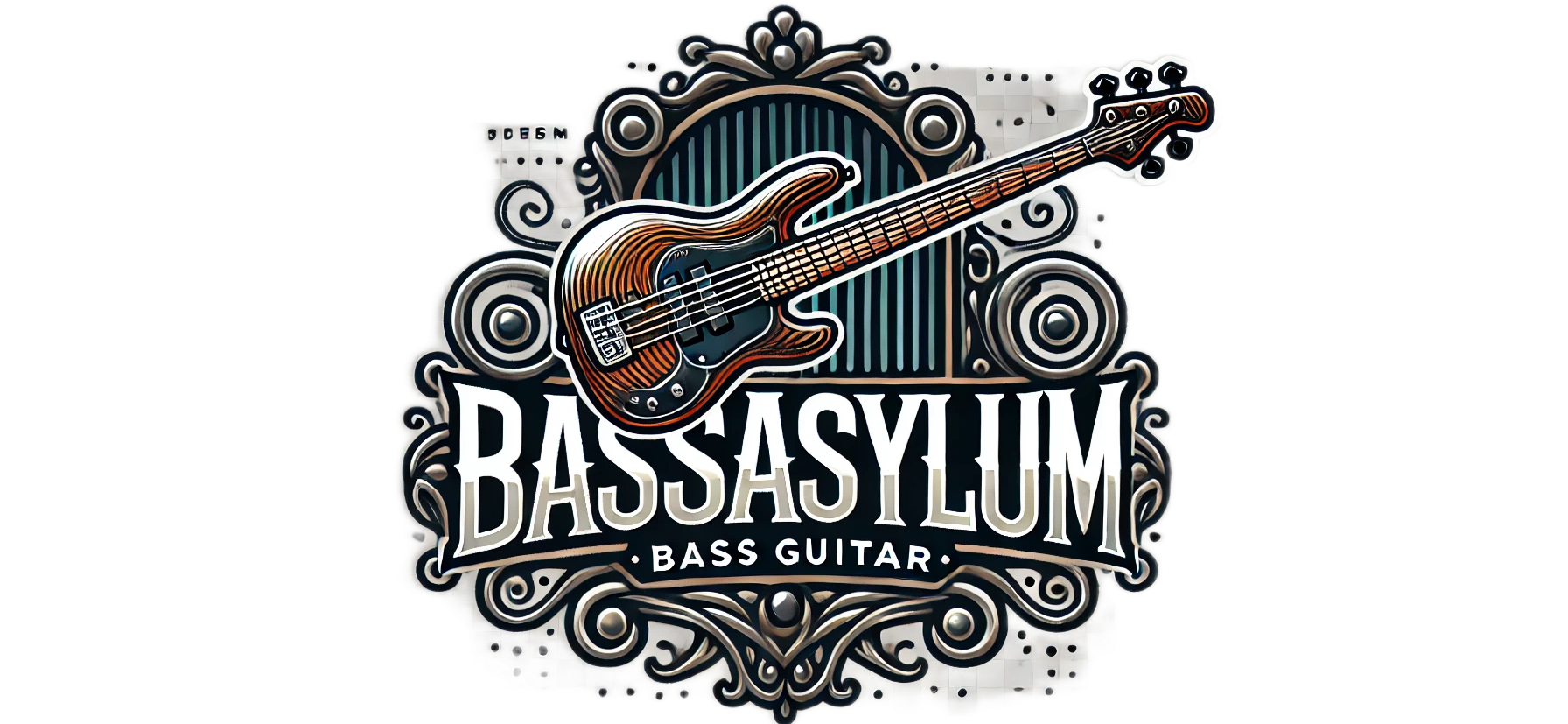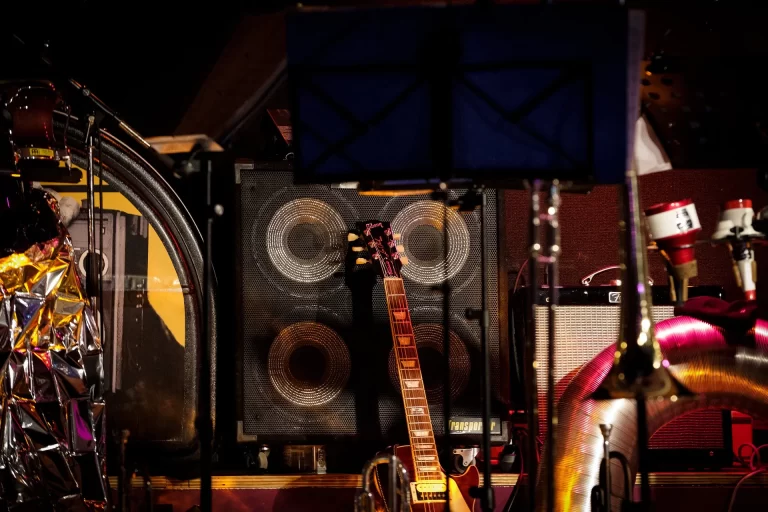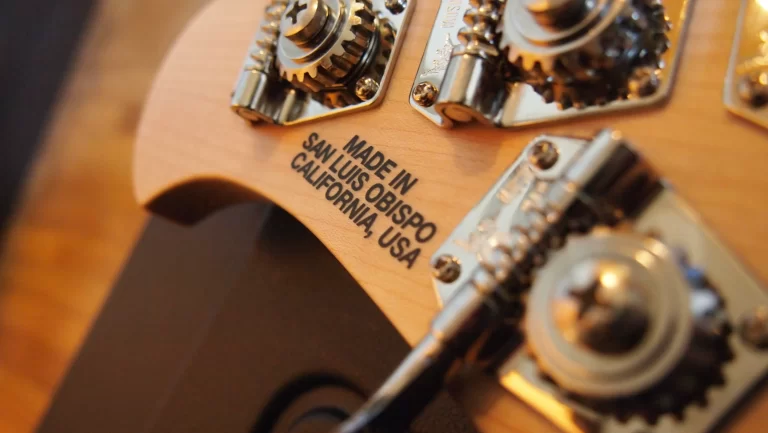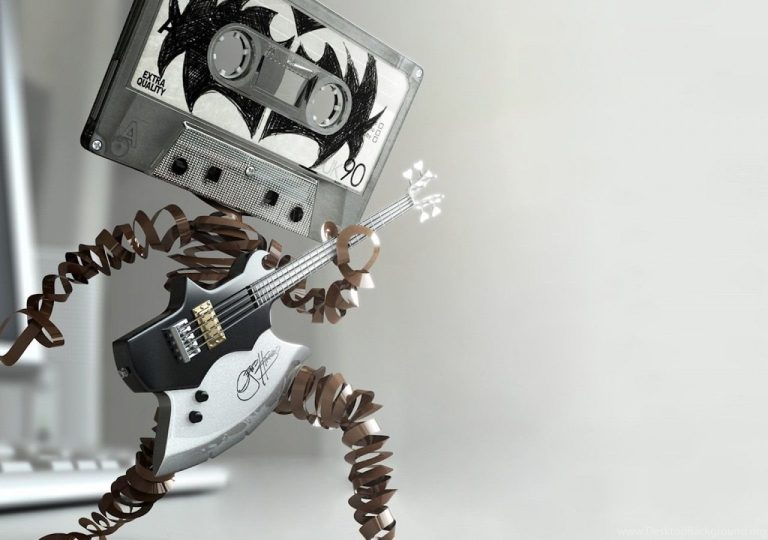Short history of Motown Records studio
It all started in Detroit, a city in Michigan in the northern US. Before the 1973 oil crisis, it was the country’s largest auto-industrial region, home to such companies as General Motors, Ford and Chrysler. One of the first megalopolises with a network of motorways, a vibrant industry and an entertainment industry, including a touring music band.
Origins
Nevertheless, Berry Gordy Jr., composer, entrepreneur and one of the key characters in our story, was not happy with the situation in the music market. Among other things, he was irritated by a large part of the audience (not without the policy of some radio stations, concert halls and record companies) with the artificial division of musicians into first and second classes, only because of the colour of their skin and their social status. The low visibility of “African” artists, irrespective of their creative, performing or skills. Scarce record distribution to the general public and little radio airplay.
Of course, Chicago’s Chess records (which had evolved from Aristocrat, founded in 1947) with recordings by Muddy Waters, Chuck Berry, Little Walter, Bo Diddley, Howlin’ Wolf, Etta James, helped to warm public opinion and the popularity of the blues. But among the European, white 1950 public, it was music known to a narrow circle of sound industry professionals and amateurs, including future musicians Rolling Stones, The Beatles, The Yardbirds, The Cream.
The future head of Motown Records – Berry Gordy was no altruist. Rather, he was finding a way to prosper, satisfying ambition, while setting a course for young talent. Born into a poor but large family in 1929 (he was the seventh child), by 1957 Berry had finished his career as a boxer, had been drafted into the army and had experienced the Korean War. The little jazz record shop he opened was not in much demand, and his wages as a factory worker did not provide much for his family.
Gordy debuted in the music business with Reet Petite. Co-written with his sister Gwen and Billy Davis for Jackie Wilson, the song became a hit on the English charts. But one successful recording was not enough for the cause. After discovering The Miracles (originally called The Matadors) Gordy teamed up with their leader, singer-songwriter Smokey Robinson, to find talent in Detroit and the surrounding area to join their music and business endeavors. They visited concert halls, clubs, coffee houses, and music studios in schools. In the end, it paid off.

In January 1959, Berry Gordy and Smokey Robinson, along with Berry’s two sisters, Gwen and Anna, founded the small recording studio and publishing house Tamla, later known as Motown Records.
A two story building at 2648 West Grand Boulevard housed the family business and included Studio A. Sound engineers Lawrence Horn (up to 1968) and Russ Terrana (since 1966) handled the mixing of sound and the editing of tapes in the small control room. The process involved, among other things, dubbing tapes with voices and instruments, making extensive use of compressor and reverb before the final mix. The Funk Brothers played in the snake pit, as the musicians nicknamed it.
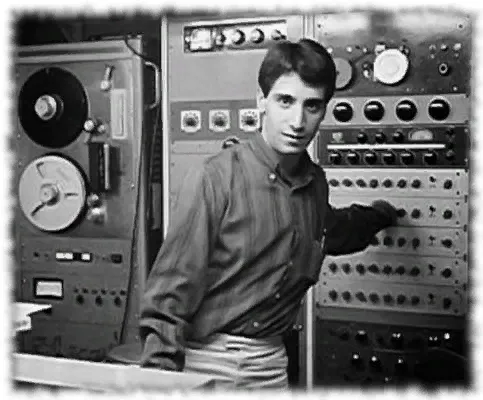
Motown studio and The Funk Brothers
The Funk Brothers were a studio band with a lot of session musicians from 1959 till 1972 when the business moved to LA, some of them being Joe Hunter (piano) who was later replaced by Earl Van Dyke (piano and Hammond organ). The rhythm section was formed by bassists Clarence Isabell, James Jamerson, and since 1966 Bob Babbitt. On drums were Benny “Papa Zita” Benjamin, Richard “Pistol” Allen, Uriel Jones. The winds were represented by Mike Terry (baritone sax), Paul Riser (trombone), Johnny Trudell (trumpet). Guitars were provided by Robert White, Eddie Willis, Joe Messina, Dennis Coffey. Jack Ashford, Jack Brokensha and Eddie “Bongo” Brown were responsible for percussion, tambourine, vibraphone and marimba.
Special mention should be made of bassist James Jemerson. He is one of the founders of the classic Motown sound, whose playing became an example and inspiration for such musicians as Paul McCartney, John Paul Jones, Jack Bruce, John Antwill, Jaco Pastorius and others. Well versed on the double bass (he can be heard in the song My Guy) and bass guitar, for years Jemerson remained faithful to the Fender Precision, La Bella flatwound 52-110 strings and a 15 watt Ampeg Portaflex tube.Overall, his accompaniment style was characterised by the use of open strings, chromatic fills, an abundance of 16s and an introduction of improvisation from jazz.

There was almost no room for chance in Motown Records. Powerful sounding rhythm section (bass and drums), danceability of soul and r&b oriented tunes, neat look of artists (classic suits and modest evening dresses), manner of holding and talking. Everything was rehearsed, calculated. Movement and speech stage teachers were hired. All the songs were carefully selected and auditioned.
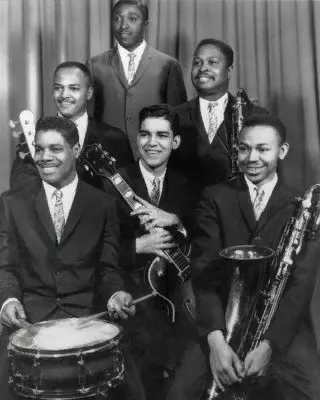
Over time, some musicians left and new ones came in, but the basic backbone of The Funk Brothers remained largely unchanged throughout much of the ’60s, which ensured that the playing and groove remained consistent.
For example, there was a legend that if a single that had just been recorded did not suit even one of the people taking the job and he told Berry Gordy that he would rather buy a hamburger than a CD, the tape was sent for rework or in the trash…
At the same time, Motown maintained a warm, almost family-like atmosphere in the early years, pulling musicians, singers, sound engineers and composers together. There was a sense of mutual support and attention to each other’s work.
Motown’s first studio successes
Money (That’s What I Want) – Barrett Strong (Janie Bradford, Berry Gordy), 1959. The track was re-sung by The Beatles in 1962. You might have heard the original on the radio in Mafia 2. As Berry Gordy’s co-writer Jenny Bradford recalled, Gordy thought out loud when he wrote the lyrics: “love, spunk and break-ups have already been written about. But what else do people care about? That’s right – money.
“Your love gives me such a thrill, but your love can’t pay my bills.” speak of the authors as pragmatists, or people who know what poverty is.
Shop Around – The Miracles (Berry Gordy, Smokey Robinson), 1960. The lead singer is already known to us Smokey Robinson. The backing vocalists accompany Robinson in a doo-wop-like manner. His soft, tenor voice tells the listener about the young people’s feelings. Their first crushes, their eventual rushes and their disappointments. So, as Smokey slightly jokingly concludes, “Mom was right,” you better take your time and value your freedom (“Before you ask some guy for his hand now. Keep your freedom for as long as you can now. My mama told me. You better shop around”).
Please Mr. Postman – The Marvelettes (Georgia Dobbins, William Garrett, Freddie Gorman, Brian Holland, Robert Bateman), 1961. As well as Money was included in the repertoire of the early Beatles and their second album With The Beatles (1963).
Fingertips (Pt.2) – Stevie Wonder (Clarence Paul, Henry Cosby), 1962. “Wild” harmonica track – a young Wonder’s solo, accentuated in the chorus by an ostinato (riff) of brass. Particularly striking is Regal Theatre’s live performance (1963).
Composers and arrangements
Motown Records adapted the song arrangements to the pop format. In part, the studio’s songwriters did what their colleagues had come up with before them. In particular, Willie Dixon and the Chess Brothers of Chess Records in Chicago promoted “African” music: blues and gospel to the masses. George Gershwin did the same at the turn of the century, turning to blues and ragtime in Rhapsody in Blue (1924) and the opera Porgy and Bess (1935). Or Duke Ellington, who deftly and skillfully intertwined the musical tradition of New Orleans with the sound of a marching brass band.
Don’t assume that Motown simply added soul and Chicago rhythm and blues to pop tunes. It was still hit music, but with an organic symbiosis of musical genres. Their continued success and the ongoing influence of Motown’s artists and songs on modern styles suggests that the musicians had a lot of skill. At least, we can hear in the records of the 1960s a clear growth and development.
The neatness, restraint is perhaps strongly evident in some of the soul-oriented works by Smokey Robinson. For example You Really Got a Hold on Me – The Miracles (1962) and My Girl – The Temptations (1964). But that doesn’t make them any worse than the others.
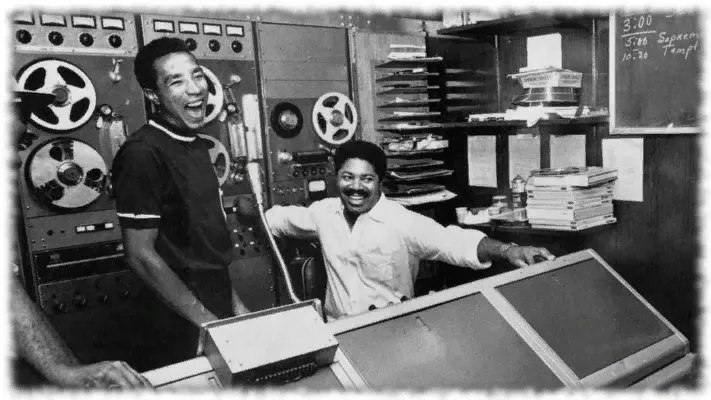
William “Mickey” Stevenson’s hit: Dancing in the Street (written with Marvin Gaye, Ivy Jo Hunter) performed by Martha Reeves and the Vandellas (1964). And especially Up-Tigh by Sylvia Moy and Henry Cosby, sung by Stevie Wonder (1966), the opposite is powerful R&B. Tracks with swaying bass and drums backed by bright brass. And the lyrics reflect joy and hope, at times overpowering.
Just as good are the compositions from Holland-Dozier-Holland: Brian & Eddie Holland with Lamont Dozier. Including (Love Is Like A) Heat Wave – Martha & the Vandellas (1963). Baby Love – The Supremes (1964). Reach Out I’ll Be There – Four Tops (1966) reflects the apparent contradiction and discord of a couple where the man is in love and the lady responds with indifference.
You Keep Me Hangin’ On – The Supremes (1966). Here, on the contrary, the girl realises that the guy is not man enough to break up with her. She suffocates in a relationship without care or support. The upbeat instrumentation (unlike the late Vanilla Fudge cover) with Robert White’s tinkling, plucking guitar. As well as Jemers Jemerson’s rocking bass movement suggests that the heroine has no shortage of determination. Although, the spoken phrase – “ain’t nothing I can do about it” – gives new ground for reflection.
Motown Records studio artists
Smokey Robinson is a composer, arranger, singer, pianist. “Right-hand man”, associate of Berry Gordy, leader of The Miracles. He sang Shop Around (1960), You Really Got a Hold on Me (1962), The Tears of a Clown (1967) and is credited with such songs as My Guy – Martha and the Vandellas (1964). My Girl (1964), Get Ready (1966) – The Temptations.
The Supremes (Diana Ross, Mary Wilson, Florence Ballard, Betty McGlown). Diana Ross was the lead singer of this female vocal group until 1970. She subsequently had an interesting solo career (but that is a subject for a separate conversation). Some of their notable songs from the 60s include Where Did Our Love Go, Baby Love, Come See About Me (1964). Live performance in 1965 at the Copacabana concert You’re Nobody Till Somebody Loves You (by Russ Morgan, 1945). You Keep Me Hangin’ On (1966), Love Child (1968).
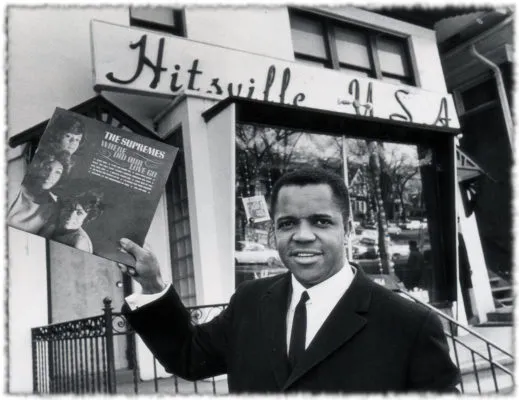 Berry Gordy
Berry Gordy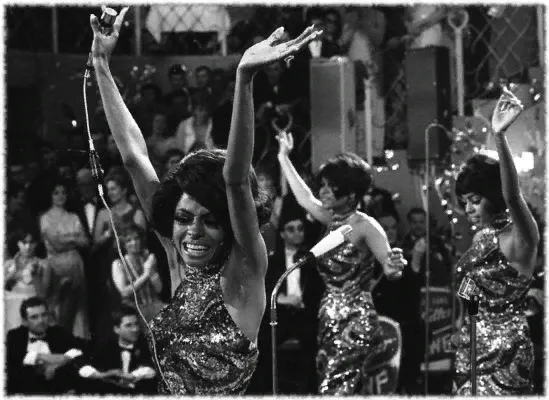 Diana Ross
Diana Ross
Besides, among the vocal ensembles worth mentioning are The Temptations, The Four Tops, Martha and the Vandellas (also known as Martha Reeves and the Vandellas). They are all interesting in their own way, but here I will limit myself to listing them.
Jackson 5 : The Jackson Five brothers (Jermaine, Tito, Jackie, Marlon) who later grew into pop idol Michael Jackson. In the early years he was responsible for the vocals in this pop-funk band. Along with Stevie Wonder, J5 are among the youngest artists of classic Motown. The band debuted with I Want You Back (1969), with Diana Ross introducing them in one of their concerts. Later followed – Never Can Say Goodbye (1971) and other singles. The idea of forming the band belonged to Joe Jackson. When he was young, he, as well as Motown co-founder Barry Gordy, took boxing lessons. In the 50s he played guitar in his own band The Falcons.
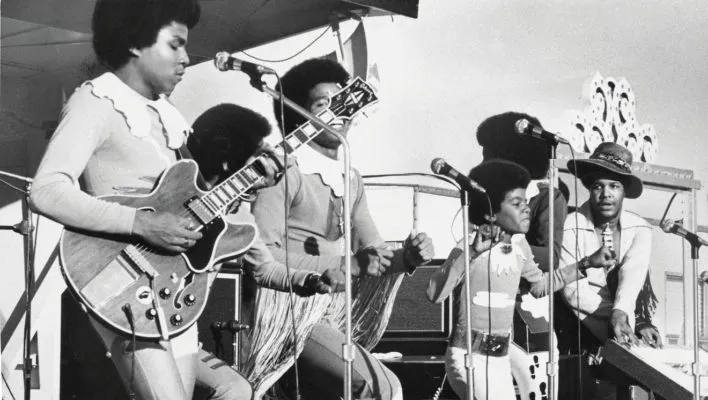
Stevie Wonder is one of the most unique artists in music history. Singer, composer and multi-instrumentalist. His notable works during the heyday of Motown (1959-1972) include Fingertips (pt 2) (1963), Uptight (Everything’s Alright) (1965), My Cherie Amour (1969), Signed, Sealed, Delivered I’m Yours (1970). On a side note, the last listed song features Bob Bebbitt on bass, not James Jemerson as one might think. As for the famous Superstition (1972), here the bass part (and all instruments except wind instruments: Trevor Lawrence – tenor saxophone, Steve Madaio – trumpet) is played by Wander himself on a Moog studio modular synthesizer. The solo instrument in the song is Hohner Clavinet.

The conditions of collaboration, by the beginning of the 70-s did not suit Wonder, the contract with the label was renegotiated in order to give Stevie more creative freedom. The albums Music of My Mind (1972), Talking Book (1972), Innervisions (1973), released in the 70’s, confirmed Wonder’s instrumental, vocal, and melodic talent. By the way, Stevie is the only artist from the 1960s to remain on modern Motown Records (one of the last singles, All About the Love Again, was released in 2009), although the company now has little in common with the 60s classics.
From pop duo, through personal drama to concept album
Marvin Gaye is a vocalist and pianist. He began in his native Washington, D.C., where among others he worked with the band that played with Bo Diddley. In 1961 while touring with The Monglows in Detroit the singer met Berry Gordy. Invited to Motown, Marvin initially accompanied Smokey Robinson and Stevie Wonder on drums. His own songs were not too successful at first. But in 1965 “Ain’t That Peculiar”, “How Sweet It Is” hit the top ten. Later, one of the pinnacles of Marvin’s creativity was I Heard It Through the Grapevine (1968) by Norman Whitfield and Barrett Strong, originally sung by Smokey Robinson in 1966. In addition, Marvin had the idea for the anti-war, one might say, social-philosophical What’s Going On (1971), which is discussed below.
This chapter in Motown’s history began with a collaboration between sonographers Nickolas Ashford and Valerie Simpson. Their song Ain’t No Mountain High Enough (1967) was performed by Marvin Gaye and Tammi Terrell. A successful pop hit artist by then, she had worked with James Brown and, after leaving for Motown, sang I Can’t Believe You Love Me (1965). In 1966, she glittered in All I Do (Is Think About You) by Stevie Wonder and This Old Heart of Mine (Is Weak for You) by The Isley Brothers.

The first duet with Marvin was followed by a string of successful recordings and joint concerts. They performed Your Precious Love and If I Could Build My Whole World Around You, among others. Eventually a busy touring schedule took its toll. A concert at Hampden – Sydney College in October 1967 was a bitter messenger for Tammy. Fainting on stage, Marvin managed to catch the girl. Then hospital and the diagnosis of a brain tumour. After undergoing surgery in January 1968, Tyrell returned to the studio to record Ain’t Nothing Like the Real Thing and You’re All I Need to Get By with Marvin. The singles were included on their second album together, You’re All I Need (1968). A little later, a solo album, Irresistible, was recorded. But a year later, the pains resumed… The fate of the talented singer Tammy Tyrell is tragic, the young performer died at 24 (March 1970).
Marvin’s album What’s Going On (1971), one of the last and unexpected successes of the classic Motown period, was written as a reflection by a close friend of Tyrrell’s. By the time the record was released, Marvin had all but stopped playing gigs.
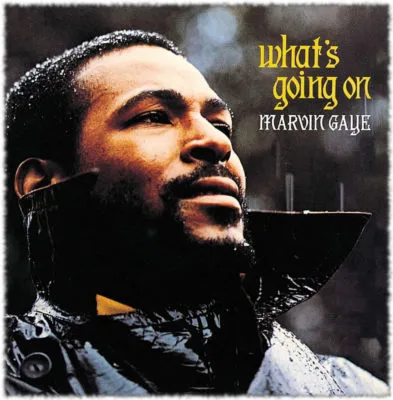
In my heart, I could no longer pretend to sing love songs for people. I couldn’t perform. When Tammi became ill, I refused to sing in public.
The album also touches on the fate of Marvin’s brother Frankie, a soldier in the Vietnam War whose revelations about the real state of affairs at the front as well as the grief over the loss of Tammy Tyrell gave Marvin food for thought. About “who we are” – humanity, society and where we are going ? It’s not your typical Motown work, while maintaining a soft ballad-funk sound, speaks of violence, social inequality, riots, the effects of wars, ecological disruption.
Berry Gordy was reluctant to release the disc for fear of Marvin’s failure as a pop singer. There was no acceptance of the record by the public, which would clearly affect the label’s reputation. But the contrast in places of almost lulling melodies and lyrics full of poignant questions and sympathy worked.
Apart from the title track, What’s Going On, where the picture of suppressed civil protest created by Marvin Gaye is beautifully complemented by James Jamerson’s bass, the musicians of The Funk Brothers and the Detroit Symphony Orchestra.
One could highlight Inner City Blues (Make Me Wanna Holler) talking about life in the ghetto, the gradual stratification of society into necessary and superfluous people. Those who are involved in the economy and those on the margins of life. A theme vividly exemplified by works such as David Simon and Eddie Burns’ multi-part The Wire. Or returning to the music of Ball Of Confusion (That’s What The World Is Today) – The Temptations (1970) by Norman Winfeld and Barrett Strong.
End of an Era (1972)
Plans to expand the business, by the early ’70s, had prompted Barry Gordy to move to Los Angeles. Closer to the epicentre of music and film production. Here comes a turning point in Motown’s history.
Marvin Gaye and Stevie Wonder were no longer going to belt out pop hits, but had become almost independent artists, with their own idea of what their songs needed. What they wanted to say to the listener and in what form to present that “speech”.
The political environment, the social climate by 1968, and even more so by 1972, had changed drastically since 1959. There was no longer a blind faith in progress, equality of opportunity between different social classes and the brotherhood of peoples. The protracted Vietnam War, student riots, race riots, the assassination of Martin Luther King, the Rolling Stones concert with Altamonte…
Hedonism was replaced by philosophical reflection and reflection. Hard rock (Led Zeppelin, Cream) progressive (Jentle Giant, King Crimson), fusion jazz (Herbie Hancock, Chick Corea). Genres with complex harmonies and an extended, sometimes almost symphonic structure. Motown was gradually becoming a monument to the era. Not the real 1960s, but the “flavour” that was formed about those times. But, as we’ve seen in our dissection of compositions before, even pop hits can talk about problems, help people get through difficult moments in life.
Legacy
Elements and techniques of Motown Records arrangements can be found in many musicians: The Chic (Nile Rodgers), Jamiroquai, Lenny Cravitz, Morcheeba, Daft Punk, Khruangbin. Samples of 60-70s hits are actively used in hip-hop, house (French touch) and in the club scene in general, cutting up more and more new fragments. On the one hand, the past becomes a kaleidoscope, where it’s not so clear who’s who. On the other hand, it speaks about the relevance of Motown’s melodies and rhythms, about the mastery of its composers, musicians and singers. That’s what DJs like Maseo (De La Soul), Destruction, Natasha Diggs are actively using – they put on funky-sounding CDs, which among others are Stevie Wonder, Diana Ross, Commodores, or Moment of Truth – Earth, Wind & Fire, which aren’t without Motown influences.
Equally popular are mash-ups – a medley or combination of several similar works in one song. Often the mash-up is performed live by a group of musicians. Without help of samplers. For example, band Pomplamoose.
Speaking of bass guitar, which is for the most part the focus of this site, James James Jemerson and Bob Babbitt said much without words with their accompaniment of vivid and still excellent-sounding songs. Just listen to You Keep Me Hangin’ On – The Suprems, Whats Going On – Marvin Gaye. Signed, Sealed, Delivered I’m Yours by Stevie Wonder, etc.
Or delve into the works of both maestros – John Paul Jones, Jaco Pastorius, and session or jazz bassists – Pino Paladino, Esperanza Spalding, Gail Ann Dorsey. They were directly influenced by the work of the Motown bands.

Hey, fellow bassists and musicians overall!
I’m nothing more than just bass player and enthusiastic blogger. Feel free to ask any questions in the comments.
Huge thanks for all crazy people who supports this resource. Keep groovin’!
